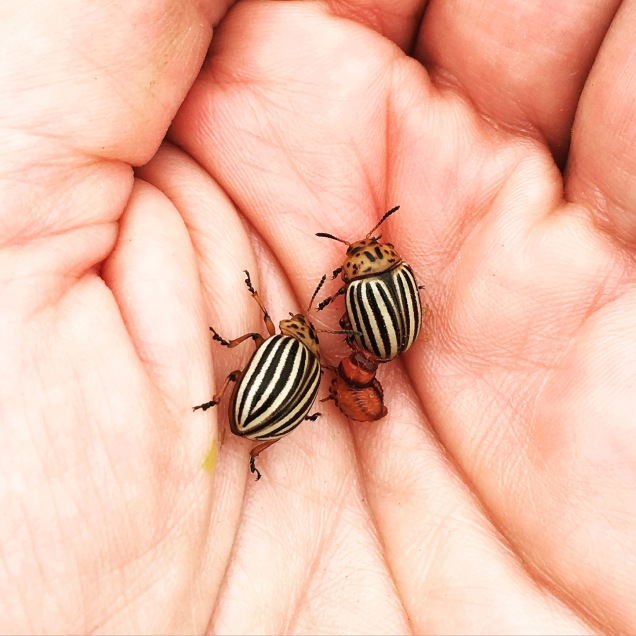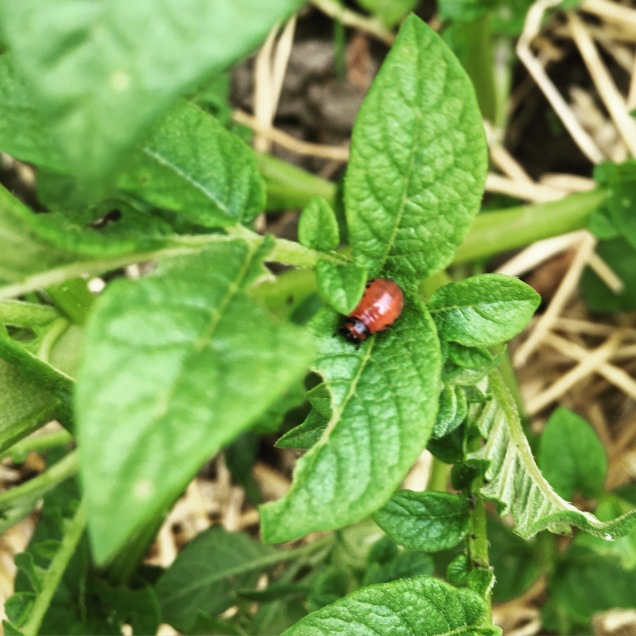It sure seems as if the growth of our potato and tomato plants has been matched by the arrival of the Colorado Potato Beetle. These pests, distinguished by their zebra-striped backs and hearty size (relative to the three-striped beetle that is) have made camp on our potato plants, unafraid to visit the nearby tomatoes.

Contrary to their name, the Colorado Potato Beetle is an invasive species that arrived here from Mexico. In Mexico however, the beetles are not pests because they are controlled by natural predators and distinct environmental conditions. In Vermont, we the gardeners are tasked with the predator role.
Our primary method of control has been careful, daily picking. I quite enjoy the act. It provides the opportunity to tune into each plant, touching its leaves and giving it a good once-over from above and below. I tend to carry a jar of soapy water and gently drop the adults, larvae, and eggs into the jar as they appear on the plants. Picking beetles is time consuming and, despite our best efforts, has not noticeably reduced the population. In fact, it appears to be growing – which makes sense as each cluster of eggs represents the beginnings of 10-30 beetles.
We’ve decided to introduce a foliar spray, hoping to get ahead of the problem and protect the potatoes growing below. We’ve begun an experiment of sorts – spraying a homemade garlic-chili repellent on one-half of the crops (recipe below), and using a store-bought Neem Oil on the other half. Results to follow…

As I said, pests are matched by growth and growth allows for bountiful, colorful harvest:



And the recipe for the garlic-chili spray:
· 5 garlic cloves
· 2 Tbsp hot pepper flakes
· 3 cups water
· ½ small onion
· 1 tsp liquid soap
Put all the ingredients (except for the liquid soap) in a blender. Blend well until the solids are broken down. Transfer to a container and mix in 1 tsp of dish soap. Let it sit in the refrigerator overnight. Strain through a sieve and discard the solid bits. Use a spray bottle to evenly distribute the liquid over the foliage in order to deter the beetles from laying eggs.